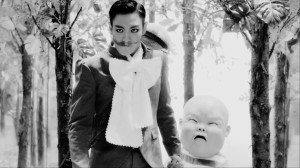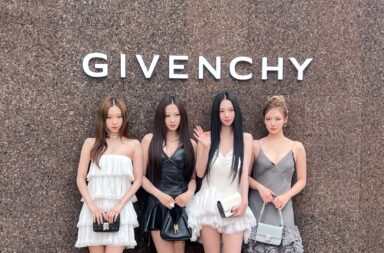 Time flies — it’s barely been a year since Rain has been discharged from the army, and fans are already being treated to trailers for his upcoming movie The Prince. This USproduction might just be another mediocre action flick, but with such names as Bruce Willis and John Cusack attached, it might also be another proof that Hollywood is still interested in incorporating aspects of the South Korean entertainment industry into its works.
Time flies — it’s barely been a year since Rain has been discharged from the army, and fans are already being treated to trailers for his upcoming movie The Prince. This USproduction might just be another mediocre action flick, but with such names as Bruce Willis and John Cusack attached, it might also be another proof that Hollywood is still interested in incorporating aspects of the South Korean entertainment industry into its works.
Interestingly, the reverse is also taking place in Korea. Especially in recent times, an abundance of Hollywood references has been making its way into the Korean entertainment industry. Especially the music video format has been subjected to this development, and certain trends regarding the use of these references have become visible.
First of all, the ones who have made use of this cultural exchange the most seem to be girl groups. The latest example is f(x)‘s “Red Light”, which — next to possible references to The Matrix and Nineteen Eighty-Four — constantly shows us the members with make-up on only one eye, a key part of Alex DeLarge‘s look in Clockwork Orange.
But f(x) are not the only ones with a penchant for Kubrick: 2NE1 recently referenced the same movie in their Japanese MV for “Crush”, with CL‘s bowler hat and general attire once again reminding the viewer of a female Alex DeLarge. This was opposed by her appearing in other scenes dressed like Holly Golightly, famously portrayed by Audrey Hepburn in the 1961 movie Breakfast at Tiffany’s.
Now, why are these exact references used and why in these music videos, when they often don’t have much to do with the rest of the storyline? One striking observation reveals that girl groups who incorporate such movie references often do so to cement their (current) strong image. f(x) and 2NE1 are both known to be exceptions from the norm when it comes to girl groups, since both of them try to avoid going either for a merely sexy or cute image. Another such example are the Brown Eyed Girls, who have also released a single which is centered around a Hollywood movie (“Kill Bill”).
All of these songs talk of the power and drive of their respective groups: f(x) are about to start a revolution, 2NE1 ooze self-confidence, and the Brown Eyed Girls take revenge on a lover who’s done them wrong.
[youtube http://www.youtube.com/watch?v=9sn_g7aWGoU]AOA‘s “Get Out”, finally, can be seen as the logical pinnacle of this referential development: In their music video, each one of the members is dressed as a famous film heroine, while the lyrics represent an aggressive goodbye to an ex-lover who just wasn’t worth it. By dressing up as such iconic international characters, the bands themselves are being raised to an iconic level. Within these bigger-than-life roles, they find support and strength to fight whatever they may be fighting (injustice, haters, ex-boyfriends).
But of course girl groups are not the only ones who incorporate movie references into their music videos. Fantastical villains such as the Joker are frequently used to portray an MV character in a more intense and shocking way (Trouble Maker — “Now”). Epik High‘s “Don’t Hate Me” even has a collection of villains, although they lose some of their scary qualities by being portrayed by children. Such videos might be a comment on how distorted our perception can be. Even though Epik High’s antis are clearly just humans, their behavior and the power they can gain via the internet might make them seem just as powerful as a villain in a movie.
 On the other hand, movie references can also be less political or social, and more artistic in scope. Take for example Big Bang‘s T.O.P, who released his long-awaited single “Doom Dada” last year; the MV of which is filled with cultural references. With yet another Kubrick reference, this time to an iconic scene in 2001: A Space Odyssey, an ape version of T.O.P throws a bone into the air only to catch a microphone when the item falls back down again. As he himself said in an interview, his intention was to go for a “cult movie” look more than anything else.
On the other hand, movie references can also be less political or social, and more artistic in scope. Take for example Big Bang‘s T.O.P, who released his long-awaited single “Doom Dada” last year; the MV of which is filled with cultural references. With yet another Kubrick reference, this time to an iconic scene in 2001: A Space Odyssey, an ape version of T.O.P throws a bone into the air only to catch a microphone when the item falls back down again. As he himself said in an interview, his intention was to go for a “cult movie” look more than anything else.
Overall, there may be many reasons why it has become so popular to include references to Western films in South-Korean music videos. It may be to accentuate the image of a certain group or the message of a song, to reflect on our human perception, or simply to create a unique look.
Whatever the reason is, as long as it does not get too repetitive, it will keep viewers engaged and keen to find out which references have been hidden in the next MV.
(K-Pop Break, fuse; SMTOWN, 2NE1, YouTube[1][2][3][4][5][6][7]; images via SM Entertainment & YG Entertainment)

